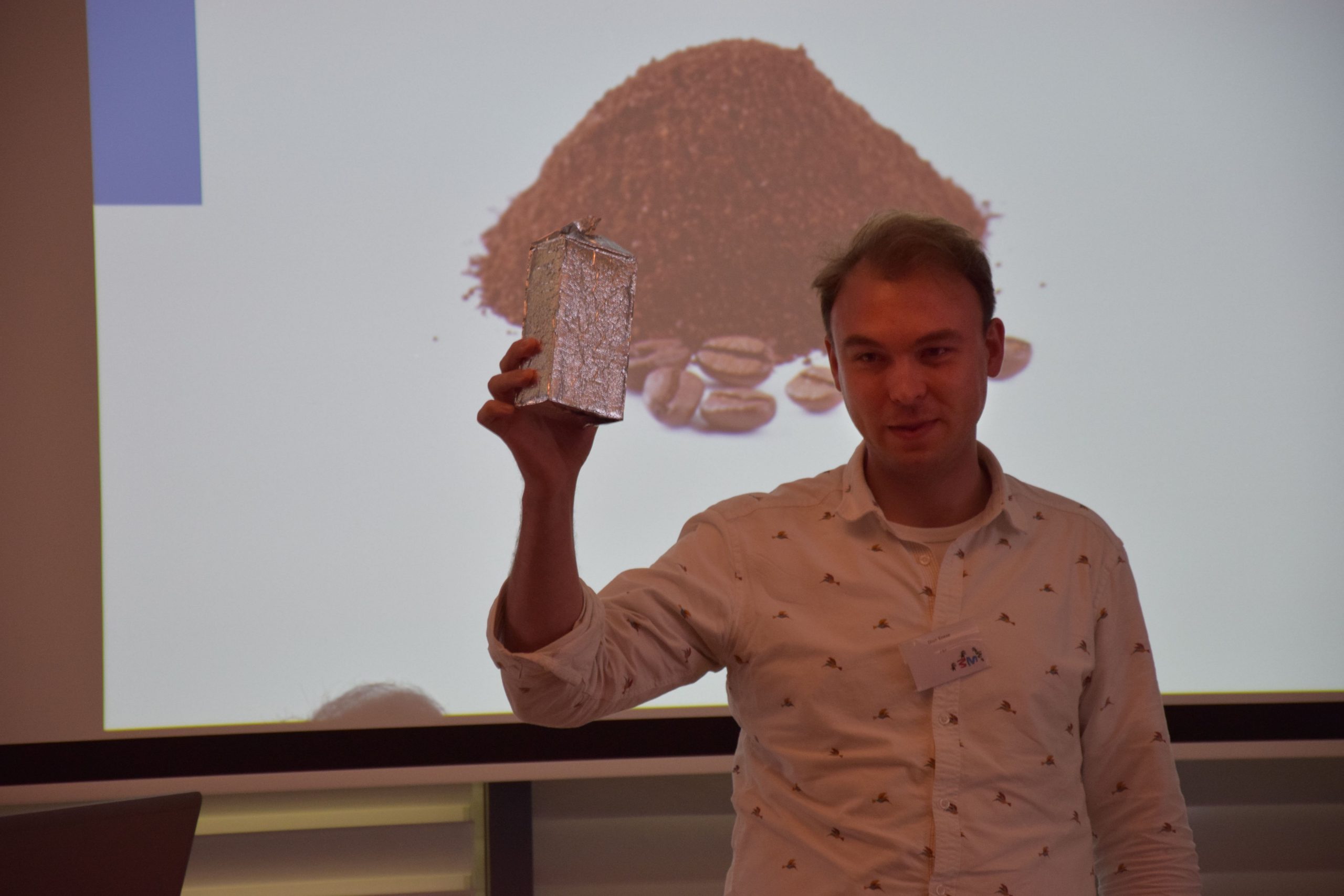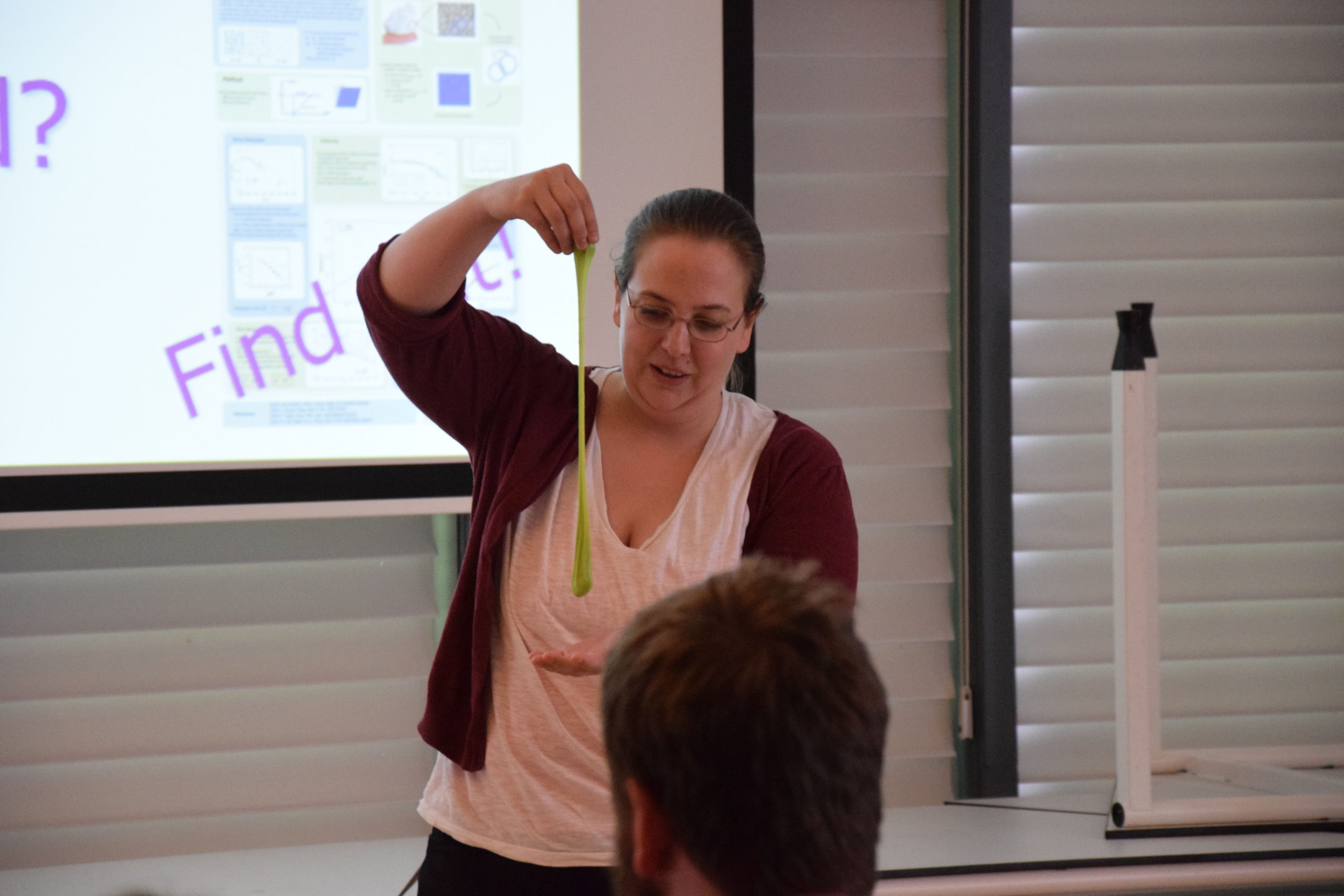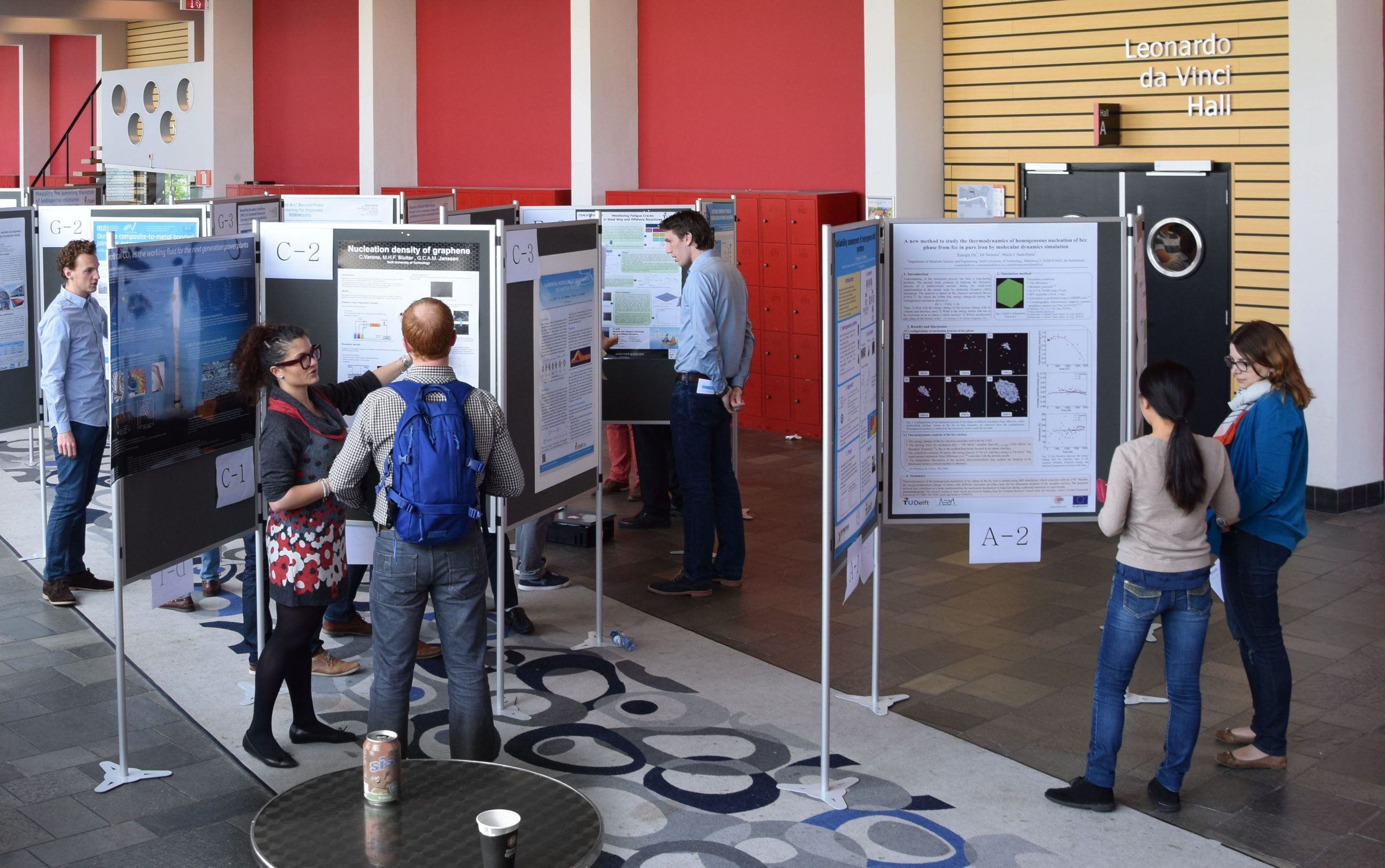For the third year in a row, the PhD Council of the Mechanical, Maritime and Materials Engineering (3mE) faculty organised a day to celebrate the work of PhD students: the 3mE PhD Day.
During this day, PhD students of various departments presented their research in a one minute pitch and competed for the best poster award.
Hildo Bijl, MSc, president of the PhD Council, explained that the goal of this day is to bring PhD students within the faculty together for social reasons as well as for opportunities for collaboration. “But the latter is disappointing,” he said, “as research subjects vary significantly, even within one department.”
Even though subjects are distinct, they all have their own interesting aspects. During the flash presentations, the PhD students had exactly one minute to present these aspects to the others and to convince them that their work is worth a talk. Despite the very strict one-minute schedule kept by the PhD council president, the atmosphere was relaxed. Afterwards, the students gave a more elaborate explanation about their work during a poster presentation in the 3mE hallway.


There, Dion Koeze, MSc, from the Process and Energy (P&E) department pitched his work by using a pack of coffee. He showed that the pack is solid and hard as a brick. But when it is opened and air flows in, it becomes soft and it can be poured like a liquid. “There is a phase transition, even though the granules in the coffee do not vibrate,” he said. “Think of beer: in the bottom of the glass, bubbles are flowing like a liquid, while at the top there suddenly is a solid foamy head.” When granules of material are closely packed, there apparently is a point at which a phase transition occurs and the material becomes solid. Dion researches the behaviour of certain mixtures of granules and how close the granules must be packed before the material becomes solid.


Koeze’s P&E colleague Julia Boschan, MSc, also showed her work on material properties. She demonstrated a clay-like material made of silicon-polymers, which can flow like a liquid, break like a solid and bounce like a bouncy ball. She explained that composites like shaving foam or cream also have a liquid-solid phase transition due to their structure, dispersed oil droplets or air bubbles in water. “When the shaving foam comes out of the container, it retains its shape and is therefore said to be a solid. However, bubbles will start evaporating after some time, the composition of the oil and water droplets changes and the shaving foam will become liquid.” In the solid phase these materials can also resist small deformations and build up stress, like conventional solids, this being one of the topics of her fundamental research.
Meanwhile, the jury, consisting of a design team and a content team, was judging the posters. One of the jury members explained: “We consider three aspects, the first being if the poster is appealing. Furthermore, we check if the content of the poster is understandable for lay people. And lastly, we look if enough information is given: the project goal, achievements so far and how these achievements were reached. Although there were differences of opinion within the jury, we eventually achieved consensus on the winning poster.” And that poster was made by Eleonoor Verlinden of the Precision and Microsystems Engineering department. With her poster “Dispensing femtoliter volumes with an AFM-femtopipette into a model cell”, she won an award of 250 euros.



Comments are closed.